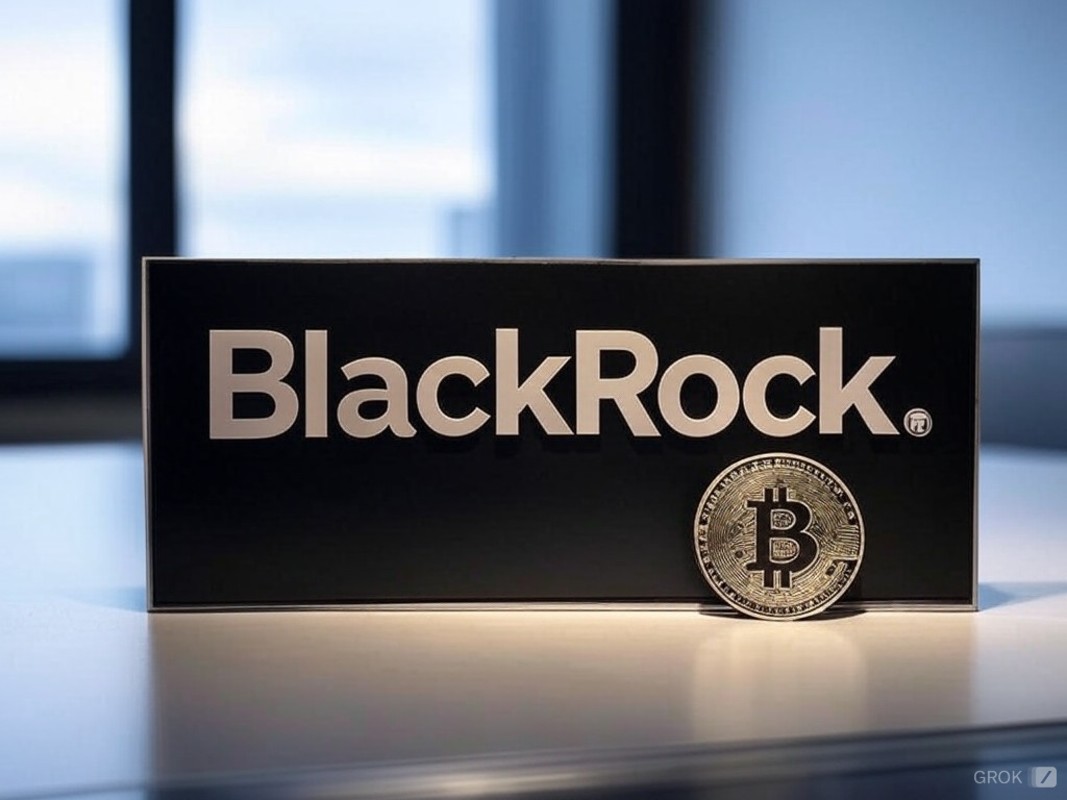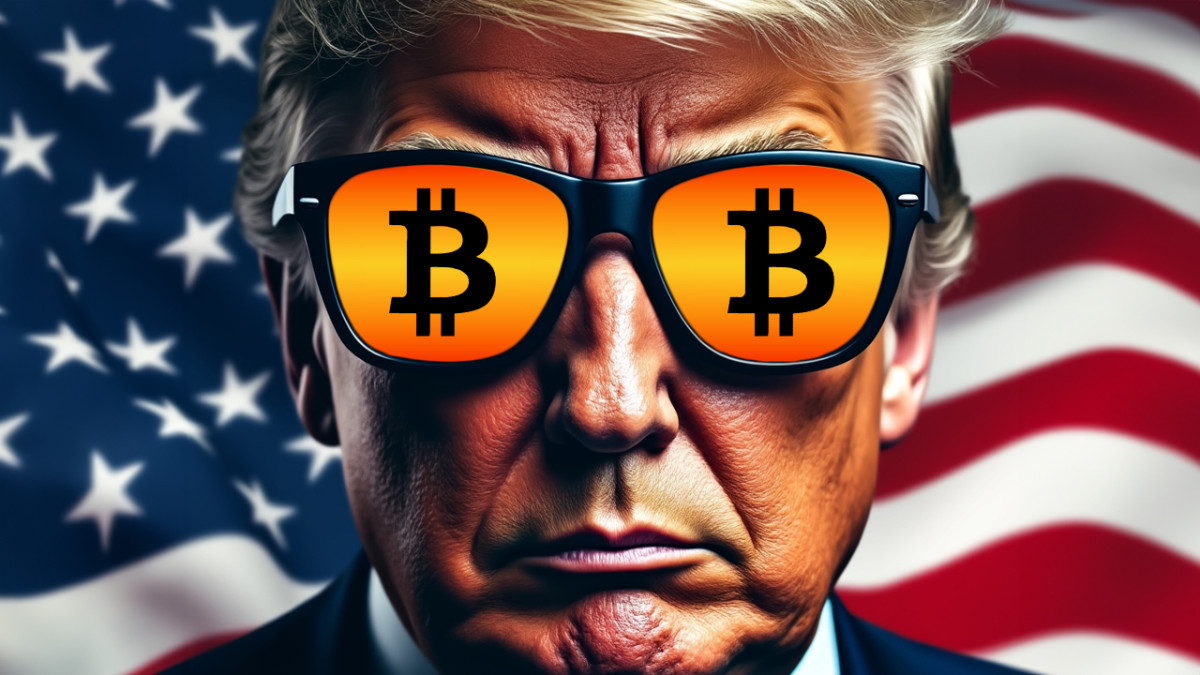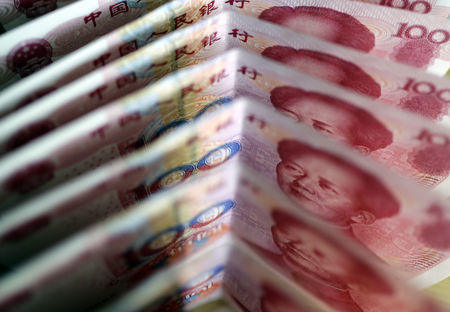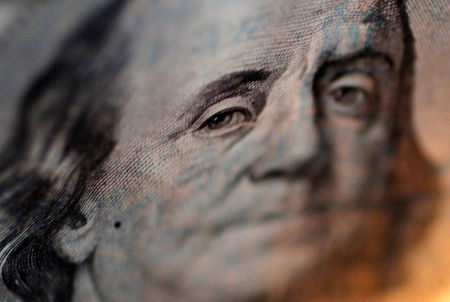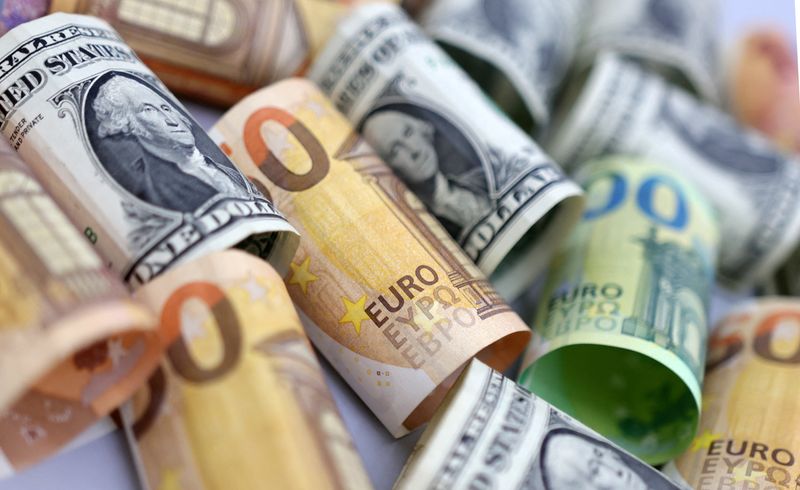Month: December 2024
BlackRock’s New Bitcoin Ad Is A Monumental Paradigm Shift
Follow Nikolaus On 𝕏 Here For Daily Posts
Yesterday, BlackRock released a new video aimed at educating people interested in Bitcoin on the asset class.
The video is quite good, honestly. I think they took inspiration from Saifedean Ammous’ book “The Bitcoin Standard,” which discusses the history of money from the beginning of time and how it has changed and evolved throughout history.
Launched in January, IBIT has now topped $50 Billion in assets as investors are increasingly using the ETP to get efficient exposure to bitcoin’s price. Yet many investors are still relatively new to the digital assets space. For those looking to learn more about what bitcoin is… pic.twitter.com/8wh9CW0xYa
— Jay Jacobs (@JayJacobsCFA) December 17, 2024
Seeing this type of educational Bitcoin content from a $11.5 trillion asset manager is something that I think will really resonate with their target audiences.
Watching the video, there was one moment in particular that stood out to me. BlackRock was highlighting where Bitcoin is today and said, “Bitcoin is no longer seen as the radical idea it was 15 years ago. Over 500 million people around the world now use cryptocurrency, with over 50% holding or investing in Bitcoin.”
That right there screams to me that Bitcoin is becoming recognized as a legit and established asset class in the eyes of the financial elite, and then eventually the mainstream.
In the early days, Bitcoin really was such a radical new idea that probably 99% of people could not conceptualize. However, over time, Bitcoin has proven itself time and time again to be a legit asset and people are now interested in embracing this new form of money. It feels like there has been a sincere paradigm shift and that we are slowly, but surely, leaving the point in history where the majority of people think Bitcoin is a scam and bad for any other generic FUD that has already been thoroughly debunked.
With that being said, I’m not saying everyone is on the verge of becoming a bitcoin maximalist or anything, but I do think that more and more people are becoming accepting to the fact that Bitcoin is here to stay and that it’s not going anywhere — which I would think eventually leads to people saying “I should probably own some bitcoin then.”
This isn’t just anyone saying Bitcoin is becoming a legit asset, this is the world’s largest asset manager. BlackRock is putting their reputation behind Bitcoin and projecting confidence in the long-term success of it. And so far it has been an amazing play by them embracing Bitcoin, with their spot Bitcoin ETF being the most successful ETF launch in history.
When they speak highly of a potentially profitable investment, people listen. I think in particular, the wealthy and accredited investors are the first to take notice and advantage of BlackRock’s signalling here. Eventually this will be followed by retail investors.
I believe Bitcoin is set to enter an entirely new paradigm unlike anything we’ve seen before.
This article is a Take. Opinions expressed are entirely the author’s and do not necessarily reflect those of BTC Inc or Bitcoin Magazine.
What is the Bitcoin Puell Multiple Indicator and How Does It Work?
In the world of Bitcoin investing, understanding market cycles is key to identifying buying opportunities and spotting potential price peaks. One indicator that has stood the test of time in this regard is the Puell Multiple. Originally created by David Puell, this metric examines Bitcoin’s valuation through the lens of miner revenue, offering insights into whether Bitcoin might be undervalued or overvalued compared to its historical norms.
This article will explain what the Puell Multiple is, how to interpret it, and what the current reading on the chart suggests for investors. For a real-time look at this tool, check out the Puell Multiple chart on Bitcoin Magazine Pro.
The Puell Multiple Chart on Bitcoin Magazine Pro
What is the Puell Multiple?
The Puell Multiple is an indicator that compares Bitcoin miners’ daily revenue to its long-term average. Miners, as the “supply side” of Bitcoin’s economy, must sell portions of their BTC rewards to cover operational costs like energy and hardware. This makes miner revenue a critical factor influencing Bitcoin’s price dynamics.
How is the Puell Multiple Calculated?
The formula is simple:
Puell Multiple = Daily Issuance Value of BTC (in USD) ÷ 365-Day Moving Average of Daily Issuance Value
By comparing current miner revenues to their yearly average, the Puell Multiple identifies periods where miner profits are unusually high or low, signaling potential market tops or bottoms.
How to Read the Puell Multiple Chart
The Puell Multiple chart uses color zones to make interpretation straightforward:
Red Zone (Overvaluation)When the Puell Multiple enters the red zone (above 3.4), it suggests miner revenues are significantly higher than usual.Historically, this has coincided with Bitcoin price peaks, indicating potential overvaluation.Green Zone (Undervaluation)When the Puell Multiple drops into the green zone (below 0.5), it signals that miner revenues are unusually low.These periods have historically aligned with Bitcoin market bottoms, offering prime buying opportunities.Neutral ZoneWhen the Puell Multiple hovers between these levels, Bitcoin’s price is typically in a steady range relative to historical norms.
Current Insights: What is the Puell Multiple Telling Us?
Looking at the current Puell Multiple chart from Bitcoin Magazine Pro:
The Puell Multiple (orange line) is trending upward but remains well below the red overvaluation zone.This suggests that Bitcoin is not yet in an overheated phase, where prices historically peak.At the same time, the metric is far above the green undervaluation zone, signaling we are no longer in a market bottom phase.
What Does This Mean for Investors?
The current Puell Multiple reading points to Bitcoin being in a mid-market cycle:
Bullish Momentum: With the metric rising steadily, the market appears to be moving into a bullish phase, though it remains far from “overheated.”No Immediate Peak: The lack of a red zone reading suggests there may still be room for upside growth before a major correction.
Investors should monitor this chart closely in the coming months, particularly as Bitcoin approaches its next halving event in 2028, which could further influence miner revenues.
Why the Puell Multiple Matters for Bitcoin Investors
The Puell Multiple offers a unique perspective on Bitcoin’s market cycles by focusing on the supply side (miner revenue), rather than just demand. For long-term investors, this tool can be valuable for:
Identifying Buying Opportunities: The green zone highlights periods of undervaluation.Spotting Market Peaks: The red zone has historically aligned with major price tops.Navigating Market Cycles: Combining the Puell Multiple with other indicators can help investors time their entries and exits more strategically.
Stay Ahead of the Market with Bitcoin Magazine Pro
For professional investors and Bitcoin enthusiasts looking to deepen their analysis, tools like the Puell Multiple chart on Bitcoin Magazine Pro provide essential insights into Bitcoin’s valuation trends.
By understanding the Puell Multiple and its historical significance, you can make informed decisions and better navigate Bitcoin’s unique market cycles.
Disclaimer: This article is for informational purposes only and does not constitute financial advice. Always conduct your own research before making investment decisions.
Nic Carter Is Wrong About the US Strategic Bitcoin Reserve
When I saw Nic Carter’s recent Bloomberg interview, I couldn’t help but shake my head. Nic, who’s been a long-time Bitcoiner and someone I respect, said that the US shouldn’t—and won’t—buy Bitcoin for its strategic reserves because it would supposedly signal weakness in the dollar on the global stage. I get his argument, but I completely disagree. In fact, I think it’s the exact opposite.
In my view, adding Bitcoin to the US reserves would be a massive show of strength. It would send a message to the world that the US sees Bitcoin for what it is: a financial safeguard, a form of “digital gold,” and not some competitor to the dollar.
The US already holds tons of assets in its reserves—crude oil, diesel, uranium, foreign currencies, and over $500 billion in gold. None of those holdings makes the dollar look weak. Instead, they reinforce confidence in the dollar’s stability. Bitcoin would do the same.
Now, let’s talk about the risk of not buying Bitcoin. If the US refuses to include Bitcoin in its reserves, it sends a dangerous message: that the US is afraid of Bitcoin and views it as a threat rather than an ally. And here’s the kicker—if the US doesn’t act, another major country will.
Imagine what happens if China or Russia starts accumulating Bitcoin and positions it as an alternative to the dollar. That’s a terrifying thought for the US. But if the US buys Bitcoin, it changes the narrative entirely. It would integrate Bitcoin into the US financial system, showing the world that Bitcoin isn’t a threat—it’s part of the dollar’s ecosystem. Just like holding gold reserves doesn’t undermine the dollar, holding Bitcoin would only boost confidence in the US at the global level.
And let’s not forget Bitcoin has been the best-performing asset of the last decade. If you’re American, why wouldn’t you want the US to have the best asset in its reserves? It might even help pay down some of that $36 trillion debt someday.
So yeah, I think Nic Carter is wrong on this one. Adding Bitcoin to the US reserves wouldn’t signal weakness—it would scream confidence, strength, and forward-thinking leadership. If the US wants to stay ahead, it needs to act before someone else does.
This article is a Take. Opinions expressed are entirely the author’s and do not necessarily reflect those of BTC Inc or Bitcoin Magazine.
UBS projects USD/CNY to hit 7.5 by end of 1H25 amid trade tensions
Post Content
Youngest Ever Bitcoin Core Contributor Gets Bitcoin Scholarship
Chaincode Labs, a privately funded Bitcoin research and development centre based in New York City, has awarded its inaugural Bitcoin Scholarship to 17-year-old Ishaana Misra, the youngest contributor to Bitcoin Core in the technology’s 15-year history.
Misra was selected from 232 applicants globally for the scholarship, covering one year’s academic expenses. She can renew it annually to potentially fund her entire undergraduate education.
“This scholarship exists to encourage young people to consider a career in Bitcoin open source development,” said Adam Jonas, CEO of Chaincode Labs. “In order to do that, they need experience. This seemed like the right kind of incentive where we are helping them continue their education and they spend their summers contributing to Bitcoin open source software.”
Misra started programming at 12, but her Bitcoin journey began before high school when she read the whitepaper. She quickly went from running a node to contributing to Bitcoin Core, teaching herself C++.
“I’m usually the youngest at Bitcoin developer meetups, but I don’t think about it much anymore,” said Misra. “Your work really speaks for itself. If you’re interested, people will take you seriously.”
It’s inspiring to see the younger generation getting involved with Bitcoin development and being supported, as it will encourage more youth to contribute.
Asia FX muted, dollar steady as Fed rate decision looms
Post Content
China May Be On the Verge of Ending Its Bitcoin Ban
Look, I think it’s only a matter of time before China pulls a complete 180 on its Bitcoin ban. Yes, they outlawed trading and mining back in 2021, but honestly, a lot has changed since then — especially this year. Bitcoin’s momentum globally has been insane.
We’ve seen US President-Elect Donald Trump calling to stockpile Bitcoin; Bitcoin ETFs get approved, Fed Chair Jerome Powell calling Bitcoin “digital gold,” Larry Fink flipping pro-Bitcoin, and even Putin saying nice things about it. With all of this happening, I wouldn’t be shocked if China has already started quietly stacking sats (buying bitcoin).
Here’s why I think that: China doesn’t like to announce what it’s doing beforehand — it’s just not how they operate. Former Binance CEO CZ talked about this recently at the Bitcoin MENA conference in Abu Dhabi, saying that while the US loves to make big public statements about upcoming policies (like Trump announcing Bitcoin plans to court voters), Asian countries prefer to move in silence.
And let’s not forget China doesn’t have elections. They don’t need to win over public opinion like Trump does. If they’re making moves with Bitcoin, they’ll do it quietly — and we’ll find out when they’re ready to make it official.
Now, with Trump’s big push for Bitcoin and crypto, I can’t see China sitting on the sidelines for too long. This is turning into a global race, and if China wants to stay competitive, they can’t afford to miss the Bitcoin train. My gut tells me they’re already planning to unban Bitcoin and crypto — and I wouldn’t be surprised if it happens as early as Q1 next year, especially if Trump takes office.
Another big hint? Hong Kong. China has a long history of using Hong Kong as a sandbox to test things before rolling them out on the mainland. And this year, we’ve seen Hong Kong make major moves — approving Bitcoin and crypto ETFs and greenlighting more crypto exchanges. Let’s be real: this isn’t a coincidence. They are planning to eliminate crypto taxes for institutions. I think China is watching carefully, and these are early steps toward a broader shift.
In my opinion, China has likely been quietly accumulating bitcoin all along. When the time is right, they’ll unban it — and not just to compete with the US, but to lead. Watch this space. I think it’s going to happen much sooner than most people expect.
This article is a Take. Opinions expressed are entirely the author’s and do not necessarily reflect those of BTC Inc or Bitcoin Magazine.
Dollar rises amid Fed rate cut expectations, better-than-expected retail sales data
Post Content
The Unit Denomination of Bitcoin Does Not Need To Change
Follow Nikolaus On 𝕏 Here For Daily Posts
Last week, long-time Bitcoiner John Carvalho introduced a new Bitcoin Improvement Proposal (BIP) aimed at addressing the unit bias issue many people face when first finding bitcoin.
“This BIP proposes redefining the commonly recognized “bitcoin” unit so that what was previously known as the smallest indivisible unit becomes the primary reference unit,” Carvalho explains. “Under this proposal, one bitcoin is defined as that smallest unit, eliminating the need for decimal places. By making the integral unit the standard measure, this BIP aims to simplify user comprehension, reduce confusion, and align on-chain values directly with their displayed representation.”
The display of how units of bitcoin are displayed would shift from its current state to this:
Current: 1.00000000 BTC → New: 100000000 BTC
Current: 0.00500000 BTC → New: 500000 BTC
Current: 0.00010000 BTC → New: 10000 BTC
“Historically, 1 BTC = 100,000,000 base units. Under this proposal, “1 bitcoin” equals that smallest unit,” the proposal further explained.
I understand where Carvalho is coming from on this and I can visualize scenarios where some people may find this easier, but I think the thinking here is likely short sighted and doesn’t work in the grand scheme of things.
Over the years I have also heard of other Bitcoiners discussing ways to combat the unit bias of Bitcoin. It seems most Bitcoiners are primarily concerned with how new users often get immediately discouraged if they cannot afford a whole bitcoin, and tend to gravitate towards buying altcoins instead where they can buy at least 1 unit of that coin.
After acknowledging the issues he’s trying to address with this, I personally do not support this BIP. I think it would add more confusion rather than solving it. I think it is ultimately a waste of time and energy for Bitcoin developers to focus on this when there are many other things they could be working on that would add actual value to Bitcoin.
I think Stehpan Livera has had a couple really good takes on this, pointing out how silly it would actually be in practice.
Hey I’ve got this great idea! Instead of 1 pizza with 8 slices, let’s just call each slice a pizza!
Just make sure when you go to order your pizza, you now order 8 pizzas instead of 1. Otherwise the staff will get confused.
Just my 2 pizzas.
— Stephan Livera (@stephanlivera) December 14, 2024
Everyone involved in Bitcoin is already accustomed to how it currently is specified, so this is not a real problem most people seem to care about. Carvalho has suggested a feature be implemented where wallets and such can toggle between the current and would-be new way of displaying the units of bitcoin, so there is a transition period where users can get used to his way of specifying units of bitcoin, but I just don’t see why it would be worth making this transition.
It would just feel like a burden on everyone to start explaining this way and potentially slow adoption if anything.
Good luck to the people who would rather explain “there will never be more than 2.1 quadrillion bitcoins”
— Stephan Livera (@stephanlivera) December 14, 2024
This article is a Take. Opinions expressed are entirely the author’s and do not necessarily reflect those of BTC Inc or Bitcoin Magazine.
Dollar outperformance to continue, but run will cool as policy uncertainty fades
Post Content
